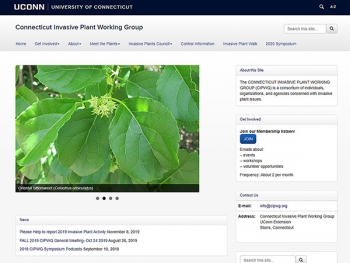
They were innocent-looking seedlings in June, but by the end of August, most weeds are like toddlers on a tantrum—you can't ignore them. Japanese stiltgrass, mugwort, and more all seem to say, "In your face, weed whacker.”
These unwanted plants are irritating and inconvenient, but their damage extends far beyond the emotions of landowners who wish the weeds would just go away. Unfortunately, invasive plant management is a year-round job and a sometimes perplexing one.
“The invasive plants are not going away,” says Pyle. “They have a negative impact everywhere, from natural habitats to backyards and neighborhoods to highway corridors.”
Learn more about CIPWG's history, biennial conference, and outreach projects at Zip06/TheDay.
See Connecticut's official invasive plant list.
